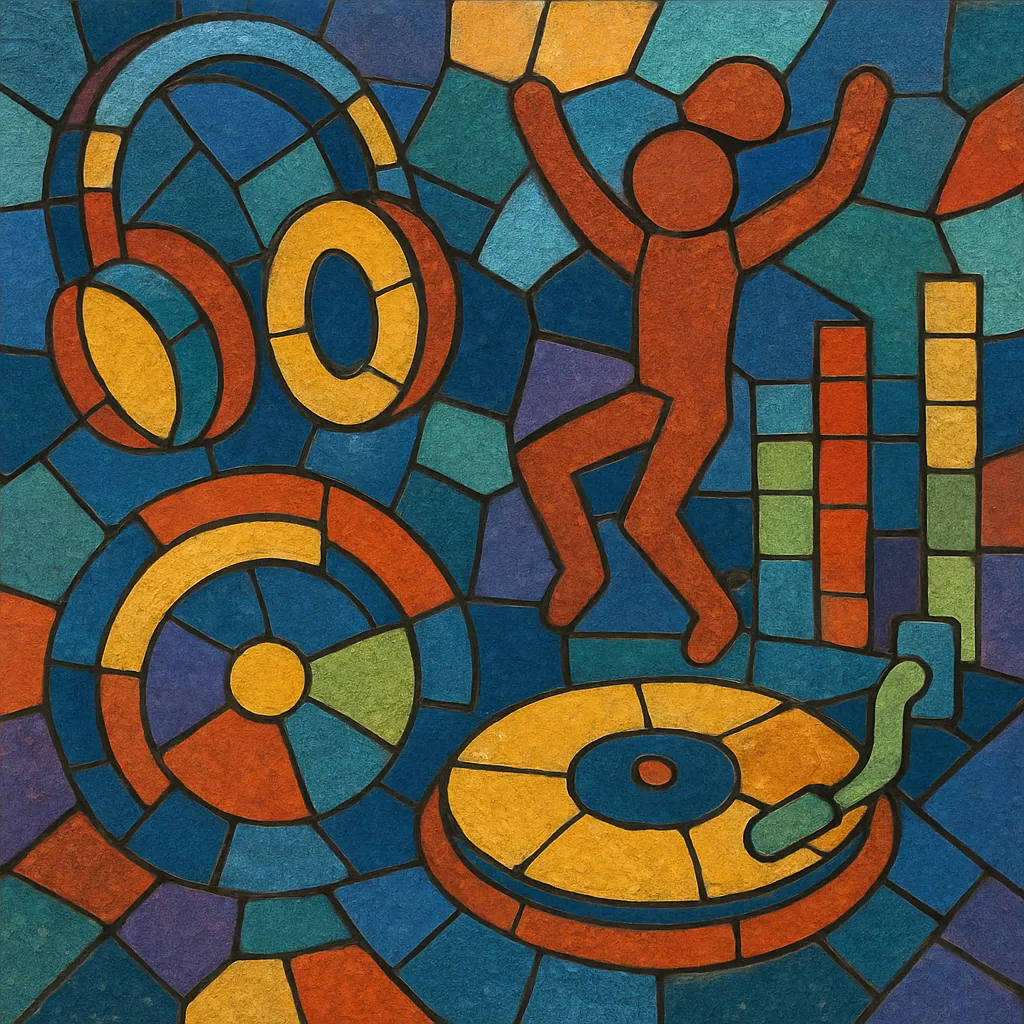
Bouncy techno is a Scottish-led branch of early-to-mid‑1990s hardcore dance music characterized by a fast 4/4 beat (typically 165–175 BPM), punchy distorted kicks, and a springy, off‑beat bass that creates its trademark “bounce.”
Unlike breakbeat‑driven happy hardcore of the same era, bouncy techno favors straight four‑on‑the‑floor drums, simple, catchy major‑key riffs, bright piano stabs, and euphoric synth leads. Vocals, when used, are often pitched‑up or sampled in short hooks. The result is an energetic, party‑ready sound designed for large raves and laser‑lit clubs, especially in Scotland’s 1990s scene.
Bouncy techno emerged in Scotland in the early 1990s as a straight 4/4 alternative to the breakbeat‑heavy strand of UK happy hardcore. Scottish DJs and producers began fusing the drive of gabber and hardcore techno with brighter, pop‑leaning hooks and pianos heard in UK rave and eurodance. Clubs and brands such as Hanger 13, Rezerection, and labels like Clubscene and Evolution Records provided crucial platforms.
By 1994–1996 the style was firmly defined: tempos around 170 BPM, hard but clean kicks, off‑beat basslines that “bounce,” and simple, cheerful melodies designed to ignite dancefloors. Scott Brown (through Evolution Records and aliases like Bass X and Plus System), Q‑Tex, Marc Smith, and Scottish rave groups such as Ultra‑Sonic helped popularize the sound at large raves across Scotland and the North of England. Parallel Dutch and Belgian scenes occasionally intersected, sharing gabber and happy influences while emphasizing the 4/4 drive.
Toward the late 1990s, enforcement issues around rave venues, the rise of trance and hard trance, and stylistic churn in UK hardcore reduced the visibility of classic bouncy techno. Yet its DNA—especially the driving 4/4 at 170 BPM and euphoric, melodic hooks—fed directly into the 2000s evolution of UK hardcore and informed the feel of later hard dance styles. The aesthetic also echoed into donk/Scouse house and hands‑up/euro‑trance adjacent productions.
Nostalgic revivals, retrospective compilations, and classic‑set DJ performances have kept the style alive. Modern producers sometimes reference bouncy techno’s signature off‑beat bass and bright hook writing, showing how this distinctly Scottish formulation of hardcore left a lasting mark on European hard dance.

